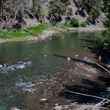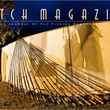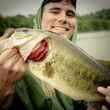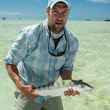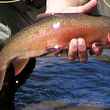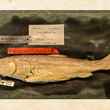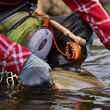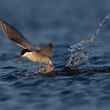RIO has been introducing a bevy of new products into its catalog of lines for spey and switch rods. RIO recently introduced three new skagit heads and also expanded its shooting line offering with two new shooting lines. Now, RIO is introducing a new line geared specifically for switch rods in its new Switch Chucker line.
The Switch Chucker is intended for switch rod applications where big flies, sink tips and heavy indicator rigs are the order of the day. Based on RIO's description of the Switch Chucker, this new line sounds like it offers a very similar suite of benefits to rigging up their switch rod with a skagit head and shooting line, but as one complete, integrated line designed specifically for switch rod use.
The Switch Chucker is also recommended by RIO for casters new to switch rods and two-handed casting, due to the powerful head and front-heavy weight distribution, making the line "extremely easy to cast."



